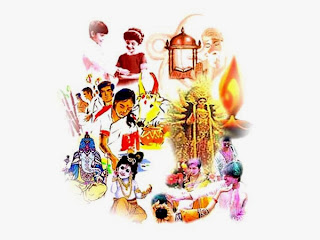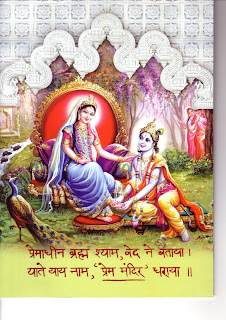Significance of Hare Ram Sankirtan
(Synopsis of a talk given by Jagadguru Shri Kripalu Ji Maharaj at Bhakti Dham, Mangarh, on October 10, 2009)
Hare Ram Hare Ram, Ram Ram Hare Hare,
Hare Krishna Hare Krishna, Krishna Krishna Hare Hare
Many of you don’t know about the origin of this namsankirtan, but it is essential you understand its importance. This is the only kirtan on this earth that is a mantra from the Vedas, and as such, it is eternal. All other kirtans were made by Saints after those Saints came into this world.
The essence of the four Vedas are the Upanishads. There are many Upanishads like Mundaka Upanishad, Katha Upanishad, Mandukya Upanishad, Shvetashvatara Upanishad, and others. This Hare Ram sankirtan is from the Kalisantarana Upanishad. Because it is a Vedic mantra and also a sankirtan, it is referred to as a mahamantra.
If anyone ever asks you why you are not using a Guru mantra in your devotional practice, you can say that the Guru mantras that originated from the sampradayas or lineages of Saints such as Shankaracharya, Ramanujacharya, Vallabhacharya, and so on, were introduced during this age of Kaliyuga. But what about the time before these Saints were on this earth? What mantras were used then?
Also, what do we mean when we refer to a Saint’s lineage, such as “Shankaracharya’s sampradaya”? This means a Guru had a Guru, that Guru also had a Guru, and if you keep going back historically you will discover that God is the ultimate Guru. Thus, all the sampradayas or lineages are actually Shri Krishna’s sampradayas.
Therefore, a devotee can say, “When I have taken the support of this eternal Vedic mantra, why should I use any other mantra?”
Hare Ram Hare Ram, Ram Ram Hare Hare,
Hare Krishna Hare Krishna, Krishna Krishna Hare Hare
Many of you don’t know about the origin of this namsankirtan, but it is essential you understand its importance. This is the only kirtan on this earth that is a mantra from the Vedas, and as such, it is eternal. All other kirtans were made by Saints after those Saints came into this world.
The essence of the four Vedas are the Upanishads. There are many Upanishads like Mundaka Upanishad, Katha Upanishad, Mandukya Upanishad, Shvetashvatara Upanishad, and others. This Hare Ram sankirtan is from the Kalisantarana Upanishad. Because it is a Vedic mantra and also a sankirtan, it is referred to as a mahamantra.
If anyone ever asks you why you are not using a Guru mantra in your devotional practice, you can say that the Guru mantras that originated from the sampradayas or lineages of Saints such as Shankaracharya, Ramanujacharya, Vallabhacharya, and so on, were introduced during this age of Kaliyuga. But what about the time before these Saints were on this earth? What mantras were used then?
Also, what do we mean when we refer to a Saint’s lineage, such as “Shankaracharya’s sampradaya”? This means a Guru had a Guru, that Guru also had a Guru, and if you keep going back historically you will discover that God is the ultimate Guru. Thus, all the sampradayas or lineages are actually Shri Krishna’s sampradayas.
Therefore, a devotee can say, “When I have taken the support of this eternal Vedic mantra, why should I use any other mantra?”



Comments
Post a Comment